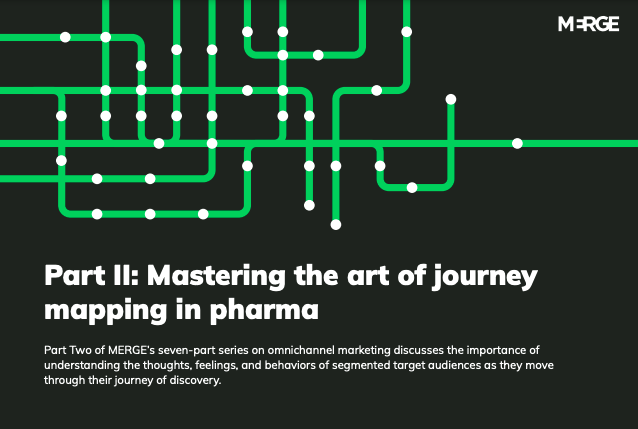“Journey mapping” is an insightful tool that many organizations, including those in pharma and medtech, use to see the experience from the customer’s point of view and even forecast experiences for future customers. This exercise is not only useful for gathering key customer insights, but also as a way to “self-scout” and suss out any gaps or pain points–be it moving between devices, departments, or channels–that a customer may encounter.
In order to architect an effective omnichannel ecosystem that connects with customers at the right time, with the right content, and via the right channels, it’s vital to have an intimate understanding of the path a customer takes to discovering and, ultimately, adopting your product. The journey map acts as the north star for architecting the blueprint of your omnichannel ecosystem.
To move from corporate producers to disease problem solvers, brands must have an intimate understanding of the path their target audiences take when discovering and adopting a new therapy. Journey mapping enables organizations to see the experience from the patient or HCP point of view. The practice is useful for gathering customer insights, identifying gaps and pain points that need addressing, and obtaining clear information about how individuals move through the journey to adoption. Designing effective solutions requires asking probing questions that strike at the heart of the problems facing customers. Specific to the field of pharma, the goal of creating a seamless customer journey takes on even more importance–given the life-altering conditions facing patients. Creating an instructive customer journey map requires an understanding of what customers are thinking, feeling, and doing.
The complete omnichannel marketing series is below:
Part One: An Intro to Omnichannel Marketing
Part Two: Mastering the Art of Journey Mapping in Pharma
Part Three: Captivating Customers with Creative Content
Part Four: Making the Most Out Of Media Activation
Part Five: A Deep Dive On Data Capture and Analytics
Part Six: Keys to Supercharging Your CRM Program
Part Seven: Optimizing Your Omnichannel Strategy With Data and Look-alike Models
Need help executing an omnichannel marketing strategy? The life science experts at MERGE can help. Get in touch.
